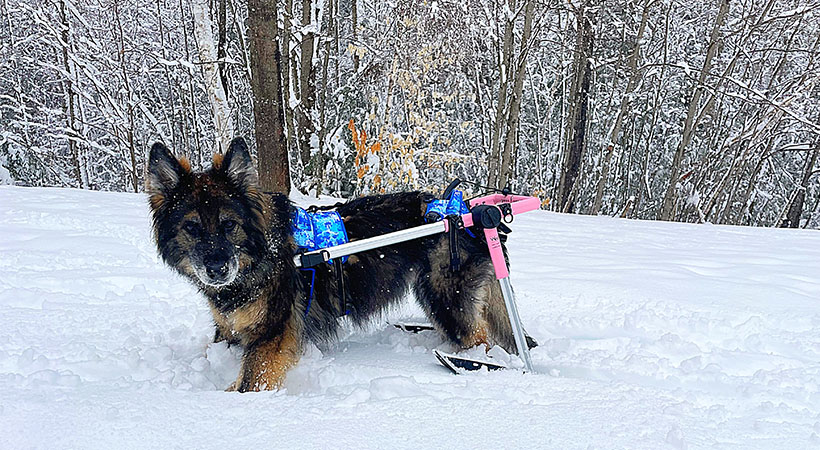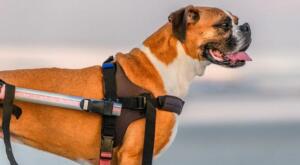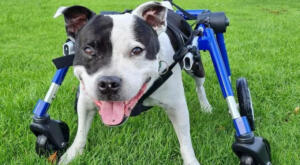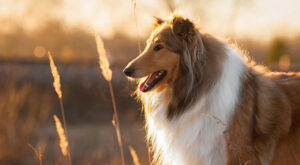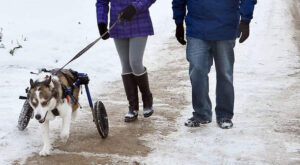As the temperature drops and winter sets in, our canine companions face a unique set of challenges. For them, cold weather is not just picturesque snowfall and cozy evenings. But it also marks the beginning of the season where they deal with lots of health risks.
As pet owners, it falls upon us to ensure winters are comfortable for them. Despite the challenges posed by nature, we should be able to help them cope and enjoy the winters as comfortably as we do.
This guide aims to help you with just that. Here, we’ll explore eight ways cold weather can impact your dog’s well-being and explore preventative measures to ensure their health and happiness throughout the chilly months.
1. Frostbite
One of the most serious threats that dogs face in frigid temperatures is frostbite. Similar to its impact on humans, frostbite occurs when the skin and underlying tissues freeze, usually in extremities such as the ears, tail, and paws. Dogs with thinner fur or those not acclimated to cold conditions are particularly vulnerable.
Here are some signs and symptoms of frostbite in dogs:
- Pale or grayish skin in affected areas
- Cold or brittle to the touch
- Pain or discomfort when touched
- Swelling and blisters in severe cases
To prevent frostbite or care for your dog during frostbite, here’s what you can do:
- Limit outdoor time in extreme cold
- Provide warm and dry shelter
- Outfit your dog with protective clothing, such as jackets and booties
- Regularly inspect your dog’s extremities for signs of frostbite
- Consult with a veterinarian if you suspect frostbite for appropriate treatment
By taking proactive measures, you can help safeguard your dogs against the dangers of frostbite during winter months.
2. Hypothermia
While frostbite primarily affects extremities, hypothermia is a broader and potentially life-threatening issue that arises when a dog’s body temperature drops below the normal range. This can occur due to prolonged exposure to cold weather, wet fur, or windy conditions.
Certain breeds (like Yorkshire Terrier and other toy breeds), older dogs, and those with pre-existing health conditions are at a higher risk of developing hypothermia.
The common symptoms of hypothermia are:
- Shivering
- Slowed or labored movements
- Weakness or lethargy
- Cold ears and feet
- Muscle stiffness
Here’s how to prevent and care for this condition:
- Provide a warm and insulated dog bed or blanket indoors
- Limit outdoor time during extremely cold weather
- Use dog jackets or sweaters to retain body heat
- Dry your dog thoroughly after exposure to rain or snow
- If your dog is prone to hypothermia, consider specialized accommodations like dog boarding arrangements that prioritize warmth and comfort.
In cases of suspected hypothermia, it’s best to seek veterinary attention promptly. Gradual warming, warm blankets, and supportive care from a veterinarian can aid in the recovery process and prevent further complications.
3. Stiffness in Joints
In colder weather, dogs, especially seniors or those with arthritis, may experience increased stiffness in their joints. The cold can lead to joint discomfort and make basic movements pretty challenging for your dog.
Regular, gentle exercises, warm bedding, and joint supplements can help relieve the stiffness. We also recommend consulting with a vet for tailored care to ensure your dog’s comfort and mobility during the winter.
4. Slippery Surfaces
It’s common for dogs to slip on Icy or wet surfaces during winter. This can result in injuries that negatively impact joints or cause strains.
To mitigate this risk, consider using paw-friendly de-icers, providing traction mats, or using dog booties for added grip. Additionally, be cautious during walks and choose routes with less slippery terrain to keep your dog safe from accidental slips and falls.
5. Skin Irritation
Cold weather can also lead to dry, itchy skin for dogs. Basically, low humidity and cold winds strip away natural oils — which, in turn, causes discomfort.
To address this issue, you can consider:
- Regular grooming (including brushing to remove dead skin and fur)
- Moisturizing with dog-safe products
- Adjusting your dog’s diet to include omega-3 fatty acids
- Consulting with a veterinarian for personalized skincare recommendations
These will help maintain a healthy, irritation-free coat during winter.
Cold weather prompts dogs to burn more calories to maintain their body temperature. This means they have higher energy requirements during winters. To tackle this, rework the diet of your dog. Offer nutrient-dense foods to help them cope. For better guidance, consult your vet. They will help address the specific nutritional requirements of your dog in colder weather.
Note that changes in metabolism may also impact your dog’s weight. They may shed a few pounds or gain some extra. While little gain or loss is okay, abrupt massive gain or loss can be dangerous for health. So, make sure you keenly monitor their weight and take prompt action in case of any massive fluctuation.
Moreover, dogs naturally drink less water in colder weather. This decrease in water consumption can lead to dehydration, as the need for hydration remains constant, regardless of the temperature. Pet owners should be proactive in ensuring their dogs have access to fresh and clean water at all times.
7. Fluctuation in Body Temperature
Dogs, like humans, rely on an intricate system of thermoregulation to maintain a consistent body temperature. Cold weather can disrupt this process and may lead to fluctuations that may impact your dog’s health. Make sure you educate yourself about the signs of temperature-related stress and how to create a comfortable environment for your canine companion.
Some common ways to deal with this situation are:
- Invest in dog coats and jackets
- Limit outdoor exposure
- Adjust diet and hydration
- Provide cozy bedding and pet-friendly heating pads
- Increase exercise time during winters
These will ensure a healthy balance in bodily fluctuations and ensure a stable body temperature.
8. Exposure to Toxins
During the winter months antifreeze is commonly used. We advise you not to use it because it presents a severe threat due to its appealing taste – which could lead to potential poisoning.
Plus, deicing chemicals on sidewalks and roads, toxic winter plants, and berries, along with mold and mildew growth in damp conditions, can contribute to health hazards for dogs. Moreover, frozen bodies of water may pose dangers, and snow removal equipment can present risks if not handled carefully.
To safeguard canine companions, pet owners should be vigilant, utilizing pet-friendly alternatives, thoroughly cleaning paws after walks, and ensuring a toxin-free environment both indoors and outdoors.
Final Words
Responsible pet care is a year-round commitment. From monitoring body temperature to safeguarding against toxins, it’s your responsibility to keep the pets healthy. Practice the tips above and embrace winter walks with interactive indoor games. These will stimulate your dog’s mind, promoting both mental and physical health.
Related Articles:

